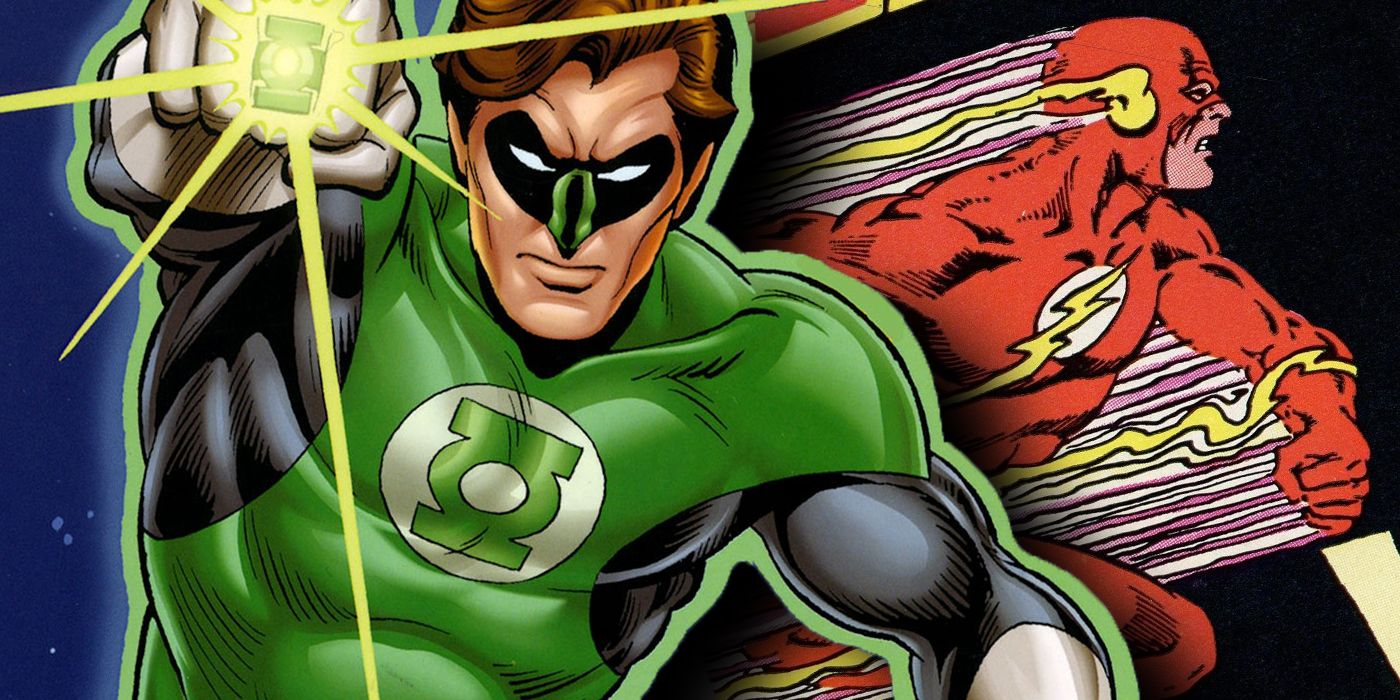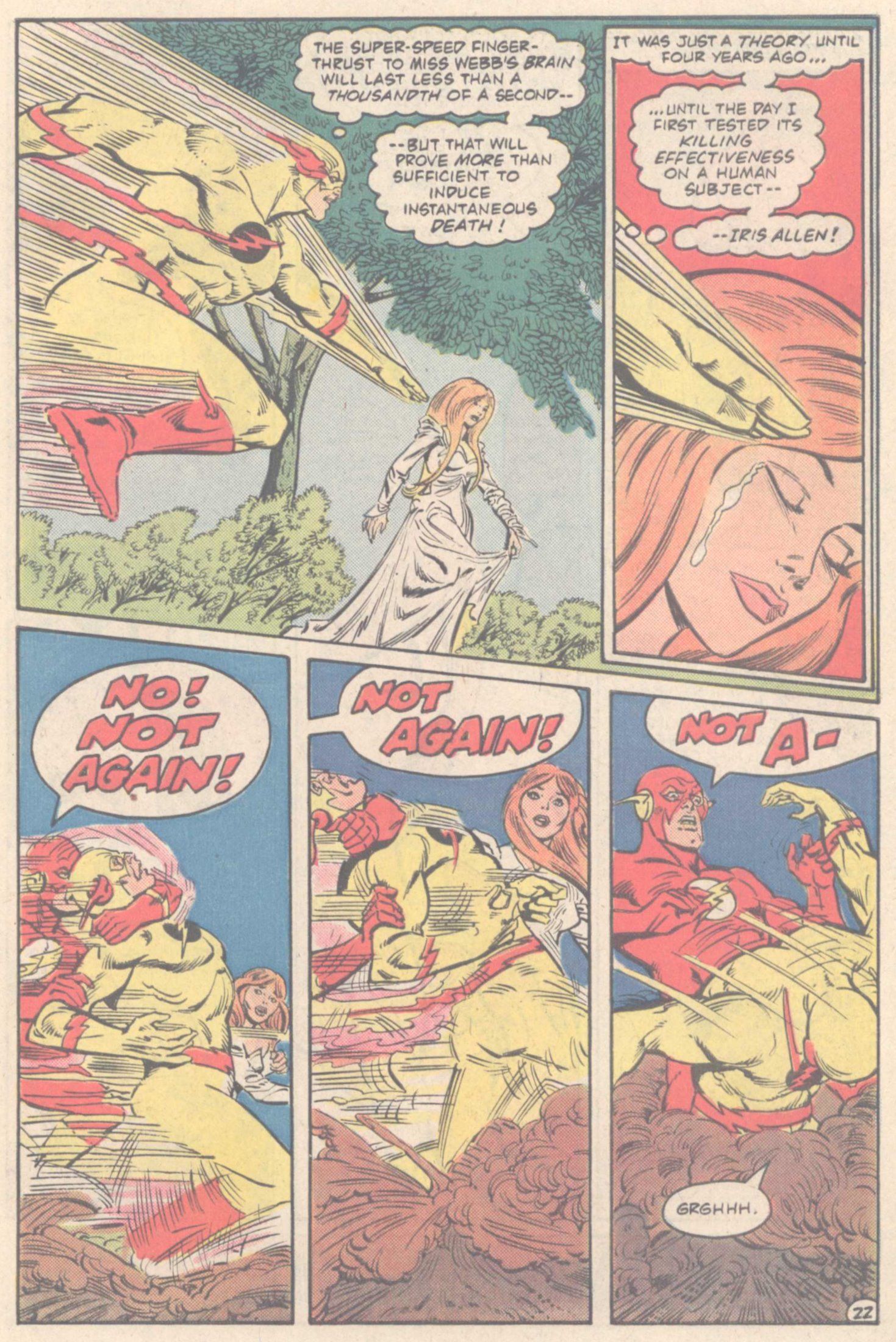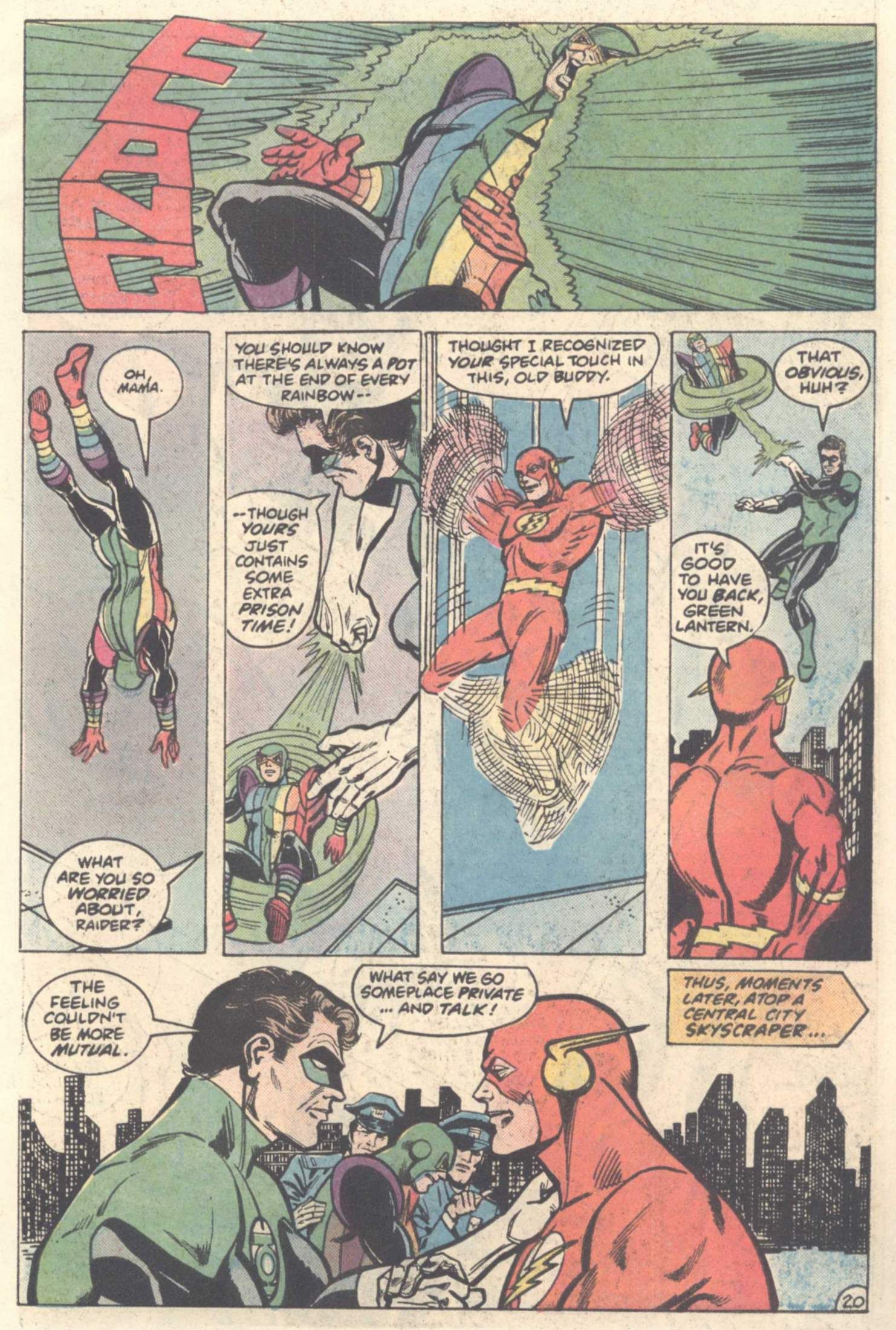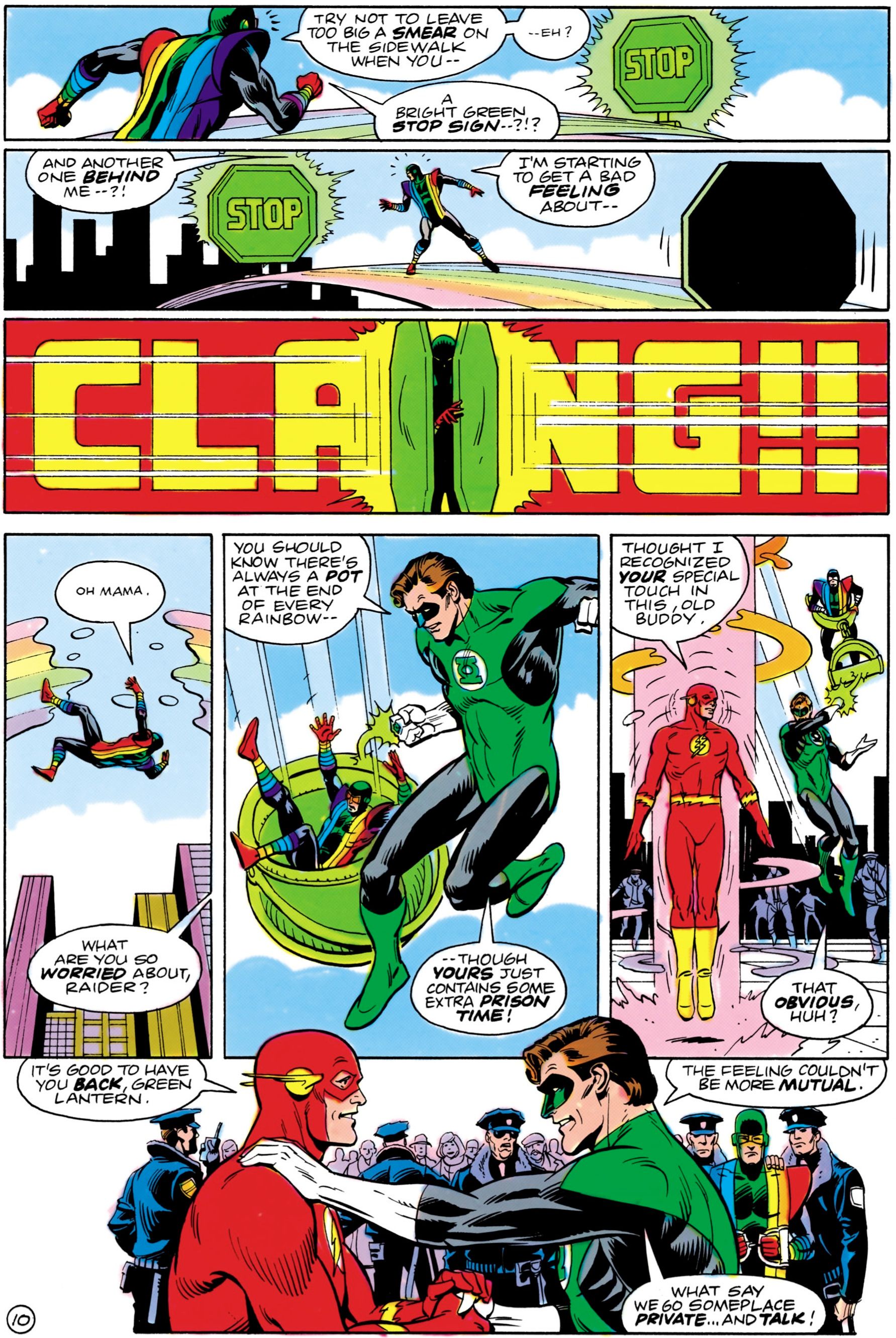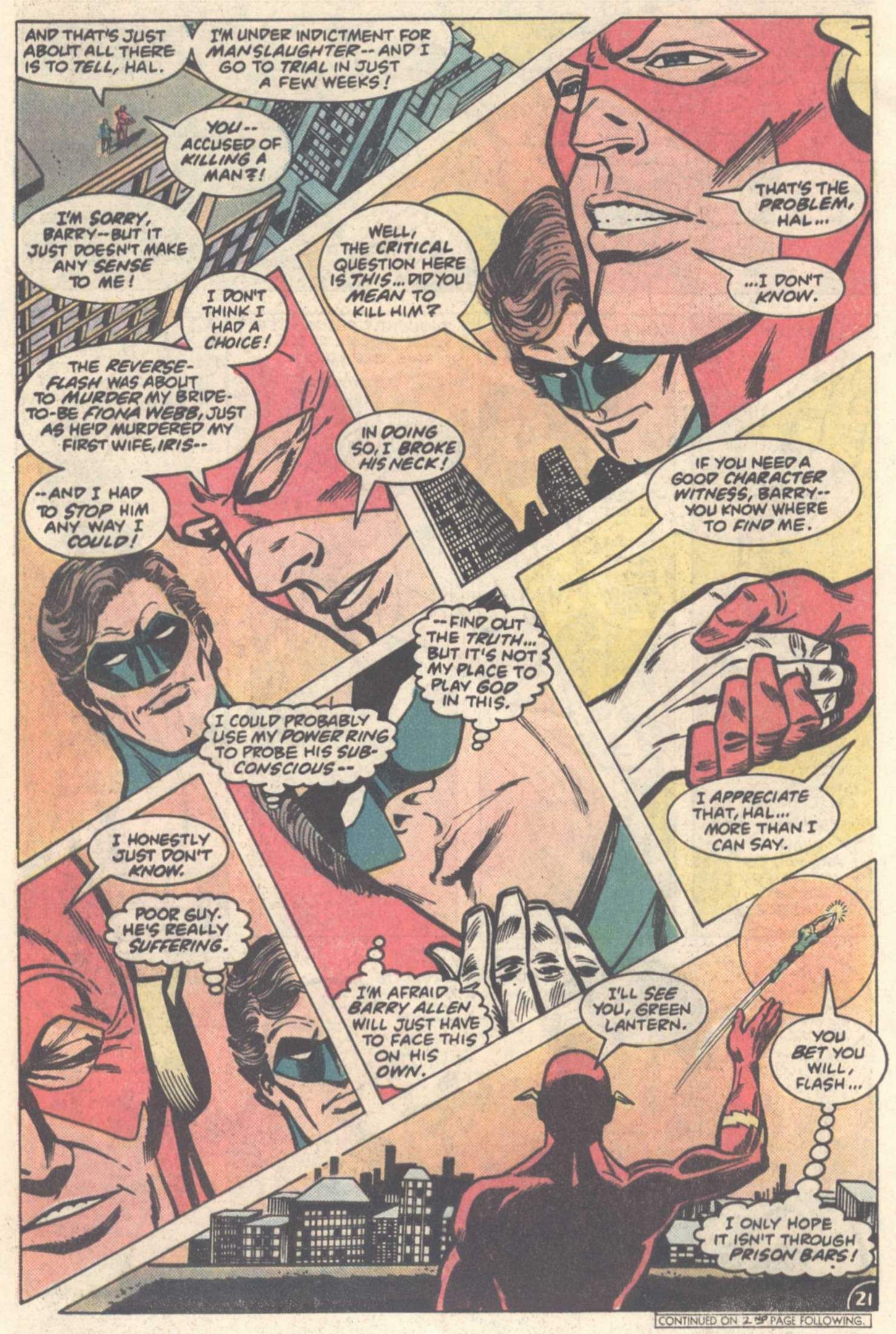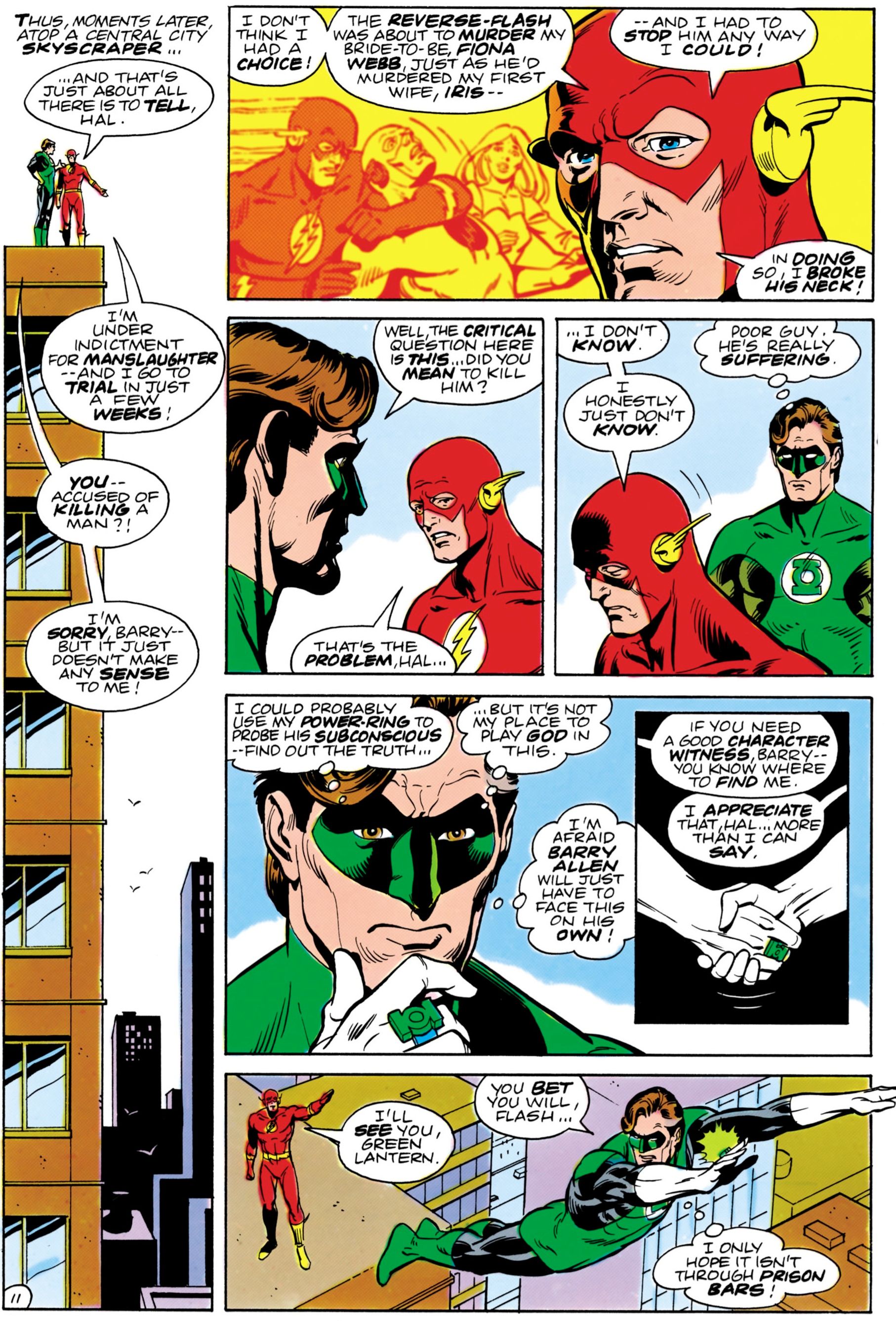Today we look at the clever way that DC showed how Green Lantern reacted to the Flash's trial for killing the Reverse Flash.
In "Our Lives Together," I spotlight some of the more interesting examples of shared comic book universes. You know, crossovers that aren't exactly crossovers.
As you likely know by now, one of the most significant superhero debuts of the 20th Century was Barry Allen's first appearance as the Flash in 1956's Showcase #4. Julius Schwartz had joined All-American Comics in 1944 during the period where that company was still a distinct company from National Comics (better known as DC Comics). Schwartz was a literary agent for science fiction writers and one of his clients, the brilliant Alfred Bester, had been doing work for All-American's Green Lantern comic book series (Bester very likely was the guy who coined the iconic Green Lantern oath) and Bester suggested Schwartz get an editor gig there. The main other editor there, Sheldon Mayer, soon transitioned to a freelancer writer when All-American merged into National (after a brief period as a standalone company around 1945. I wrote about Mayer's transition from editor to writer in a somewhat recent piece).
At DC in the late 1940s/early 1950s, Schwartz concentrated on non-superhero stuff, but after the Comics Code came into effect, Schwartz looked to the superhero genre again as part of DC's anthology, Showcase, which was designed to launch new feature ideas. Working with writer (and fellow editor) Robert Kanigher and artist Carmine Infantino, a new version of the All-American hero, the Flash, was developed and it was a hit. Three years later, Showcase #22 (with Schwartz working with writer John Broome and artist Gil Kane) saw the debut of ANOTHER revamped All-American hero, Hal Jordan as the new Green Lantern. This version was ALSO a hit.
So during the 1960s, Schwartz edited Flash and Green Lantern and used mostly the same writers on both books (John Broome and Gardner Fox) and they were some of the most acclaimed comics of the era. So much so that DC later asked Schwartz and Infantino to save their flailing Batman line of books in 1964. Due to the books sharing an editor (and regular writers), Flash and Green Lantern had regular team-ups in a way that few other DC superheroes of the era did outside of the World's Finest duo, Batman and Superman. In fact, in a lot of ways, the Flash/Green Lantern team-ups were almost MORE personal, since the style of the books were more personal, in general, as the heroes would literally double date in the comics (Barry with Iris West and Hal with Carol Ferris), something that Batman and Superman would never do (Batman and Superman would be more likely to be putting one another through psychological torture as part of a birthday present).
Thus, by 1984, despite Schwartz having ceased to be the editor on the two titles for years at this point (he took over the vaunted Superman titles in the 1970s), Green Lantern and Flash still had a special relationship, and Len Wein and Cary Bates showed just how special in a clever "crossover" between the two titles.
To set the scene, Len Wein had taken over editing duties on Green Lantern in late 1983's Green Lantern #171 and he started writing the book, as well, with the following issue, where he launched an acclaimed run with a young British artist named Dave Gibbons who would later do a 12-issue series with Alan Moore for DC that people sometimes talk about. Green Lantern has been stuck in outer space for a year as a way to prove his commitment to the Green Lantern Corps and Wein brought him back to Earth, where he re-established a romance between Hal and Carol Ferris and had Hal go to work for Ferris Air again in a sort of back to basics approach (albeit with a whole new set of supporting characters, as Ferris Air was headed in new directions in its technology). However, since Hal had been away from Earth for so long, he missed out on some rather major news, which he found out about in Green Lantern #175.
That news? Well, in Flash #324 (by Cary Bates, Carmine Infantino and Dennis Jensen), the Reverse Flash, who had previously murdered the Flash's wife, Iris West Allen, also tried to murder the Flash's new bride, Fiona Webb, on her wedding day to Barry Allen and in the ensuing fight, the Flash had killed the Reverse Flash by snapping his neck and over the course of the next few issues, was indicted by a grand jury and was now set to stand trial for manslaughter.
So Hal finds out from reading the newspaper about Barry's trial and quickly heads to Central City to see how his friend is. The Flash, meanwhile, in Flash #332 (by Bates, Infantino and Frank McLaughlin) is in the midst of a fight with the Rainbow Raider (who had used his emotional spectrum powers to make the public turn on Flash, calling him a killer). Hal shows up right in the nick of time to stop the Rainbow Raider in his tracks (it would be funny if he had snapped his neck) and the two heroes decide to go have a private talk...
Well, that same scene was done in Green Lantern #175 (by Wein and Gibbons), as well (Bates had recently taken over editing duties on Flash, so it was presumably easier for him and Wein to coordinate with each other).
In their private talk, Hal considers using his ring to see whether Flash deliberately killed the Reverse Flash, but instead changes his mind and the two heroes split as friend, with Hal sad over Barry's current lot in life...
Here's the Green Lantern version of the scene...
Which artist do you think did the two pages better, Infantino or Gibbons?
Thanks to longtime reader, Rick, for this suggestion!
Okay, folks, if you have a suggestion for another interesting piece of shared continuity, drop me a line at brianc@cbr.com!

